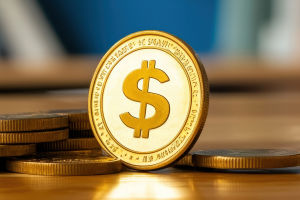Welcome back Lykkers! Today, let’s explore the evolving world of luxury—what’s driving change, why it’s facing challenges, and what this all means for shoppers and brands.
From rising prices to shifting buying habits, here’s a quick and clear guide to what’s really happening in the high-end world.
The Current State of the Luxury Market
A Declining Global Market
In 2024, the global luxury market experienced a 2% decline, dropping from €1,500 billion in 2023 to €1,478 billion. This signals a notable slowdown, especially for a sector known for its resilience.
Projections for 2025 show only modest growth—around 2% in Europe and 3% in parts of Asia—driven largely by tourism-related spending.
Instability Within Key Brands
Several well-known fashion houses have undergone rapid leadership changes. Creative roles and executive positions have seen high turnover, reflecting uncertainty within the sector. Famous clothing brands have made significant internal changes, pointing to broader shifts in strategy and direction.
Why Is Luxury Facing Challenges?
Global Economic Pressures
Several economic and social factors have contributed to the current state. In some key markets, economic uncertainty, reduced consumer confidence, and rising youth unemployment are causing people to rethink how they spend.
This has led to more cautious purchases and a focus on essential over extravagant items.
Market Shifts in Asia
Previously a growth engine, the luxury market in Asia is seeing slower development. This change is influenced by housing sector issues and shifting consumer behaviors. Many potential customers are holding back on high-end purchases, especially visible ones, due to growing social sensitivity about wealth display.
The Rise of “Luxury Shame”
A growing number of consumers are choosing discretion. Some prefer not to showcase expensive items in public, seeking to avoid judgment or unwanted attention. This shift in attitude has a direct effect on sales of iconic status symbols and heavily branded pieces.
Rising Prices and Their Impact
Significant Price Increases
Between 2019 and 2024, the prices of luxury items increased by an average of 54%, according to HSBC. Accessories were especially affected—wallets, handbags, and other leather goods saw some of the steepest hikes.
For instance, a well-known designer handbag nearly doubled in price, reaching €11,100 from €5,800.
Excluding Mid-Level Consumers
While these increases helped brands raise profits, they also made products inaccessible for many longtime fans. This has led to a gradual loss of middle-tier customers who once viewed luxury goods as occasional treats or aspirational investments.
A Two-Sided Market
Accessible Luxury: A Taste Without the Cost
A more inclusive segment has emerged. Consumers who still wish to experience brand prestige are turning to less costly items like perfumes, skincare, cosmetics, and eyewear.
Designer cafés, lounges, and hotels also offer an affordable glimpse into luxury lifestyles. These options allow broader audiences to feel connected to high-end brands—without stretching their budgets.
Exclusive Luxury: Tailored for the Few
On the other end of the spectrum lies ultra-exclusive luxury. This includes top-tier jewelry, one-of-a-kind collections, and personalized service experiences. These are designed for a small group of individuals with exceptionally high wealth, often holding assets over \$30 million. Though this group represents just about 2% of the total customer base, they account for roughly 40% of luxury sales.
Conclusion: A Market Redefining Itself
Adapting to New Expectations
Luxury is no longer just about flashy branding or high price tags. It’s increasingly about values, personalization, and meaningful experiences. The market is navigating between two poles—one offering affordable elegance and the other delivering rare, made-to-order exclusivity.
Staying Relevant
To remain attractive, luxury brands must evolve with their audience. This means offering value beyond cost, fostering a sense of identity, and understanding modern consumers’ concerns and desires.
What This Means for Lykkers
As the luxury world changes, it opens new opportunities for smart, style-conscious individuals. It’s not just about labels—it's about how thoughtfully a product or experience is designed, and how well it connects with the people who use it.


